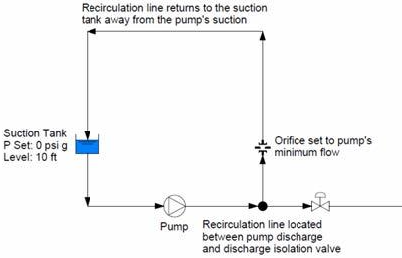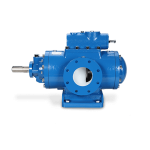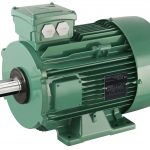The dead head of a pump is a condition in which a centrifugal pump operates continually without any fluid flow through the pump. This leads to undesirable consequences for the pump and other parts of the system. In this article, you will learn the causes and effects of dead head pump, detecting the dead head condition, how to calculate its pressure, and how to resolve the condition.

Cause and Effects of Dead Head Pump
The occurrence of dead head in a pump could be due to a pipeline blockage or a closed discharge valve. When this happens, there is no exit path for water. Thus the same fluid volume continually circulates. As a result, the fluid temperature rises continually due to friction with the pump’s rotating impellers. Then, upon reaching its boiling point, it begins to vaporize. If this condition continues, the presence of vapor makes it easier for the heat to transfer to surrounding parts as well as causing cavitation. The parts at risk include bearings, bushings, seals, etc. Eventually, these parts crack or damage in some form, leading to compromise in integrity of the system. In an extreme case, the dead head could lead to explosions due to overpressure of the hydraulic energy in the pump. Hence, measures should be in place to detect its occurrence as early as possible.
Detecting Dead Head Pump
Unfortunately, the traditional float switch cannot protect a pump from deadheading as the fluid level inside the pump does not change during this condition. However, a range of methods may suffice. One is installing a temperature sensor on the pump casing that alerts when it is too hot and subsequently shutting down the system as a precautionary measure. Another method is deploying a flow meter on the discharge line. If there is a significant decrease in the flow, this device can detect and deactivate the system, thereby preventing possible damage. Overall, the best method, which enjoys a high level of adoption in industry, is the use of tools that monitor the pump motor load. Such tools can achieve this by either measuring:
- Motor current.
- Input power.
Because a deadheading pump draws more current to convert it into a useful load, monitoring the current value is a valid method. But it is not effective in early detection as the current is relatively flat below 50% loading. In contrast, input power varies linearly, corresponding to the motor load range. Thus, it is a more sensitive measure, and the preferable method to use in developing instrumentation that detects dead head pump.
Calculating Pump Dead Head Pressure
Calculating a pump’s dead head pressure involves setting up testing apparatus. Moreover, this apparatus should include a pump, flow lines and test ports at the pump inlet and outlet, and a manometer for pressure measurements.

Below are the steps of a dead head test:
- Ensure that it is only the working fluid that fills the entire system. Also, the removal of any air is pivotal to the success of this test.
- Connect the manometer to the system via the test ports at the suction and discharge sides of the pump.
- Initiate flow in the system, and with the pump fully operational, slowly close the discharge valve at the pump outlet. In addition, be sure to leave the valve at the suction side open for the duration of the test.
- With the discharge valve in a closed position, use the manometer to read and record the suction and discharge pressures.
- Finally, subtract the pump inlet pressure (Pin) from the pump outlet pressure (Pout) to obtain the dead head pressure (Pdh).
![]()
Fixing and Troubleshooting
With the possibility of deadheading in a pump system, it is imperative to integrate a recirculation path from the pump discharge line. Moreover, such a path will proceed from upstream of the discharge valve carrying flow back to the pump’s supply source. This recirculation line confirms the occurrence of deadheading. Normally, this recirculation line will be closed, but if there is suspicion of a dead head, it opens to check if flow passes through it. By opening, it shows that there is a blockage somewhere downstream of the recirculation line. Hence, a professional should take the following steps:
- Shut down the pumping system.
- Inspect the pump and surrounding equipment for physical damage such as cracks, leakages, or motor burnout.
- Disassemble the pump and remove blockages along the line. In flow systems that are prone to blockages, cleaning the lines should be done regularly using a pigging device or alternative means.
- Finally, reconnect the pump and check for any tripped circuits, before putting the system back in service.



